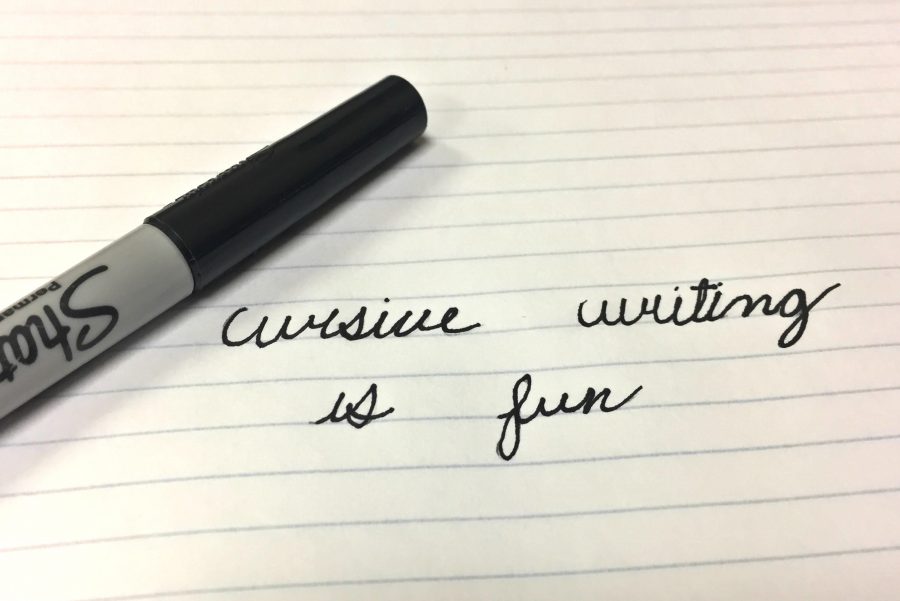Four out of 10 KHS students lack cursive writing skills
IMAGE / Emilie Lewis
In 2016, Alabama and Louisiana passed laws requiring schools across the country to teach cursive. These two states are the newest of the 14 states that require cursive.
Many students were taught how to read an write in cursive in elementary school. However, many don’t remember the continuous loops of the connecting letters and the repetitive practice of tracing each letter of the alphabet.
This is mainly because of how little it is used. The only time you are ever required to write in cursive is your signature, and most of the time it’s not real cursive letters, only random squiggles.
Some think that cursive is a timeless form of writing, while others think that it’s a thing of the past.
However, no matter your opinion, the knowledge, or lack thereof, of cursive writing is another form of evidence of the generation gap.
When students are told to write an essay, they are almost never written in cursive. Most high school students only know how to write their name in cursive, and sometimes it’s not even legible. But if you look back on the past, many documents are written in cursive.
These documents can be as big as the Declaration of Independence and the Constitution, or as small as your grandparents’ old love letters or grandparents’ notes on a birthday card.
An Eclipse survey of 100 Kearsley students showed that only 62 percent know how to write in cursive while 100 percent of the teachers and administrators surveyed know how to write in cursive.
Most students believe that the only time cursive is ever used is when you write your signature, and, therefore, believe that it is not important while others believe that it is a skill that will always be necessary.
Senior Steven Alvarado feels that it is important for him and fellow students to know how to read and write in cursive.
“It is like a creative style, like art,” Alvarado said.
Senior Matteo Frazier has a similar opinion.
“Many people still write in cursive, so it is important to know how to read and write cursive,” Frazier said.
Senior Jacob Finateri has a different opinion altogether.
“It serves no functional purpose for the English language,” Finateri said.
Many schools around the country are obeying the new law in their states. However, some states, such as Ohio, are trying to avoid the new curriculum. Instead of making it a requirement in English classes, a school in Ohio introduced cursive as a part of an art class.
Whether or not you believe it’s important, you can’t argue that cursive isn’t making a comeback. More and more states are beginning to require cursive as a form of penmanship.

Birthday: June 3, 2000
Extracurricular activities: volleyball
Hobbies: Reading
Plans after high school: Go to college to be a sign language...










